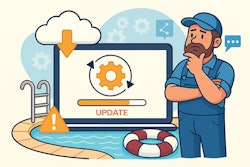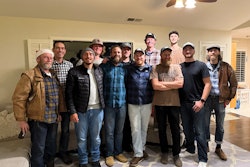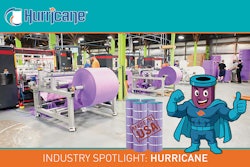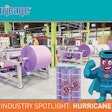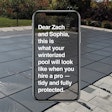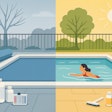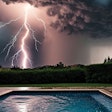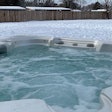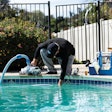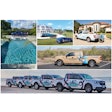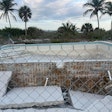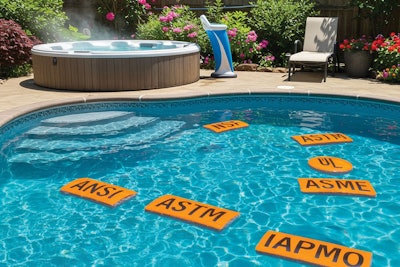
In the aquatic industry, manufacturers are often faced with liability concerns that can result from failing equipment, unmet operator expectations for circulation or water quality, and waterborne illnesses or injuries that can shut down facilities and tarnish an organization's reputation. This doesn’t include the pressure of delivering safe and effective products that meet industry expectations and requirements.
Industry standards like NSF/ANSI/ CAN 50: Equipment and Chemicals for Pools, Spas, Hot Tubs and Other Recreational Water Facilities and NSF/ANSI/CAN 60: Drinking Water Treatment Chemicals – Health Effects have been mainstay standards in the industry, providing a benchmark for safety and performance requirements that help with these concerns. Many products can earn third-party certification to these standards, including automatic controllers, ultraviolet (UV) disinfection systems, filters, and water treatment chemicals. It is imperative for manufacturers to understand the different industry standards for some of the most common aquatic products and the importance of third-party certification.
AUTOMATIC CONTROLLERS
Automatic controllers utilize sensors and probes to measure water parameters like temperature and free chlorine to turn equipment on and off based on defined setpoints. State, local or other codes or regulations may require automatic controllers to be third-party certified to the NSF/ ANSI/CAN 50 standard, which tests for accuracy, repeatability, and life testing for electronic components. These products also undergo testing for chemical resistance, setpoint actuation, and operational protection. Overall, testing verifies the accuracy of the readings, accurate signaling to equipment based on those readings, and that they protect the circulation system and swimmers from chemical overdosing.
These devices must all meet the same minimum level of accuracy based on the specific parameter being tested. Automatic controllers can be certified for pH, oxidation reduction potential (ORP), free available chlorine (FAC)/total chlorine, and free/total bromine, but NSF/ANSI/CAN 50 allows for method development for additional parameters. When using controllers certified to this standard, the operator can be confident in the product’s quality.
UV DISINFECTION
UV systems are typically installed to kill or inactivate microorganisms.
They are being used more frequently to control chloramines in the water and thus improve air quality in indoor natatoriums. However, when the UV lamp is underpowered for the flow rate, the system may be ineffective at both of these tasks. This makes third-party certification imperative to ensure they work as they claim.
NSF/ANSI/CAN 50 serves as the industry standard for verifying that secondary disinfection systems can inactivate 99.9% (three-log reduction) of Cryptosporidium oocytes and that supplemental disinfection system inactivation rates are measured and published for a minimum of two organism species. UV systems use high-energy light to damage microorganism DNA and RNA or to break the molecular bonds in chloramine compounds. Independent verification enables consumer confidence that the product meets stringent industry requirements.
FILTERS
Filtration is a critical component to ensuring water quality. Testing of filters to NSF/ANSI/CAN 50 includes evaluating performance, reliability and design:
- Performance: The performance test evaluates the filter’s ability to clean water, which is verified with a turbidity reduction test. A formulated “dirty” water must be “cleaned” by demonstrating a 70% turbidity reduction in five turnovers.
- Reliability: The reliability of the system is evaluated by verifying that backwash cycles are effective at cleaning the media bed or filter septum and that the sand or sand-alternative media doesn’t migrate to a degree that renders the next filter cycle ineffective.
- Design: The design test includes pressure testing the tank to minimum industry strength requirements and verifying manufacturer head loss claims across the system are accurate.
These testing requirements ensure that a pool filter unit meets standard requirements and is effective for use. Cryptosporidium log reduction credits are also an optional verification claim.
WATER TREATMENT CHEMICALS
A health effects assessment for recreational water treatment chemicals is required in many U.S. states. These products can be tested under NSF/ANSI/CAN 50 for recreational water use to prevent adverse health outcomes, related to contaminants in the chemicals, for lifetime swimmers. This standard assesses possible health outcomes resulting from exposure to these contaminants, including allergic reactions, kidney damage, lung damage and cancer. It also examines contaminant exposure from inhalation, ingestion and adsorption through skin.
Water treatment chemicals may also be tested to NSF/ANSI/CAN 60. In some respects, this is a stricter test because people drink significantly more tap water than pool water, therefore the ingestion exposure is much higher. NSF/ANSI/CAN 60 does not have health effects criteria related to inhalation or skin adsorption. Testing consists of chemical analysis for metal and organic compounds that exist as impurities in chemical products and determining whether the concentration in the treated water is a health risk.
BENEFITS OF THIRD-PARTY CERTIFICATION
In addition to providing consumer confidence that their products work as they claim, third-party certification is required by many states and provinces for equipment and chemicals. By seeing a third-party certification mark, regulators know that certain minimum equipment performance and safety standards are being met. These certifications can be verified at the various certification body websites to confirm certification of a product. Some states do allow alternative means to approve equipment or chemicals through data submissions and regulatory reviews, but different states often set different minimum benchmarks or preferred technologies. When operating in multiple states, using a third-party certification mark allows one benchmark to meet all the state requirements.
Administered by NSF (formerly the National Sanitation Foundation), NSF/ ANSI/CAN 50 continues to evolve through the contributions of testing laboratories, manufacturers and regulators to improve health and safety of recreational facilities.
Some examples of other organizations offering third-party certification of products used in the pool and hot tub industry include ASTM (pool ladders, steps, safety covers, etc.), UL (spas and hot tubs, etc.), ASME (safety vacuum release systems, commercial swimming pool heaters), and IAPMO (skimmers, etc.).
This article first appeared in the July 2025 issue of AQUA Magazine — the top resource for retailers, builders and service pros in the pool and spa industry. Subscriptions to the print magazine are free to all industry professionals. Click here to subscribe.

























